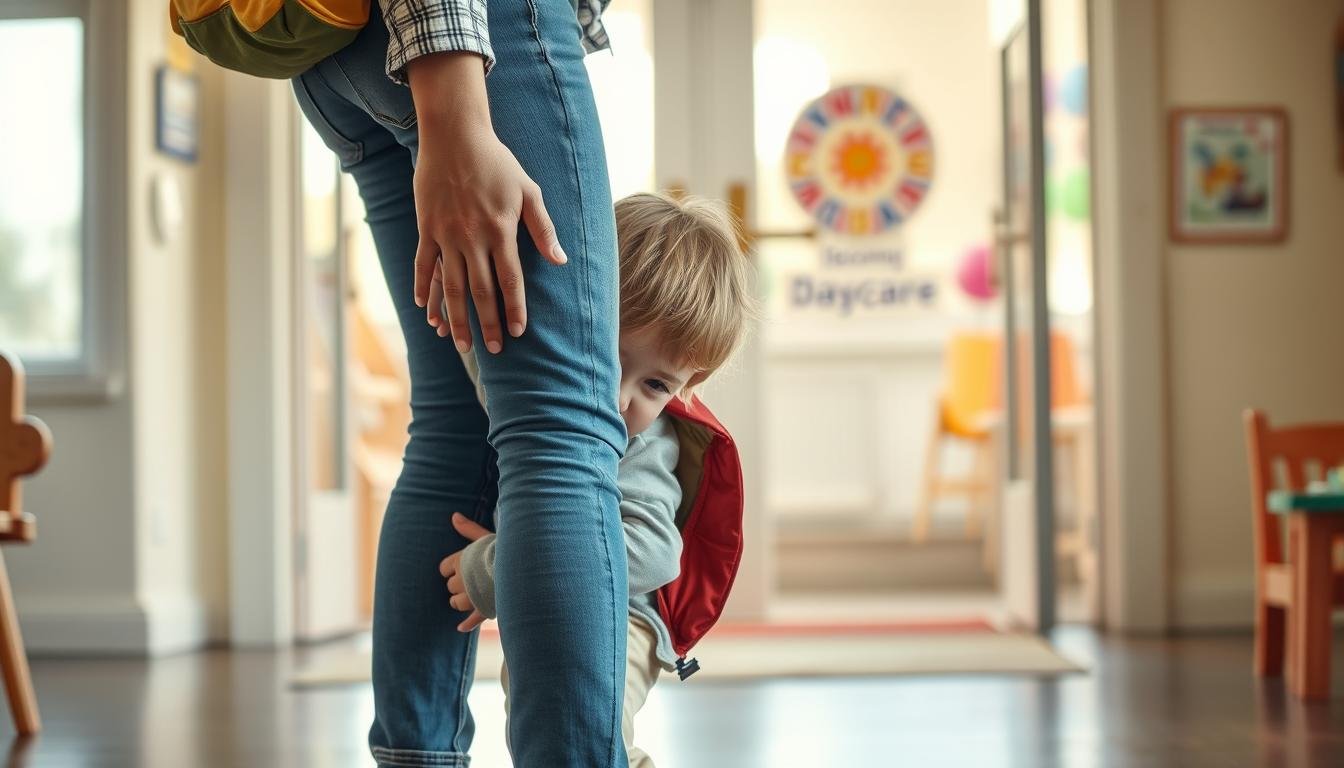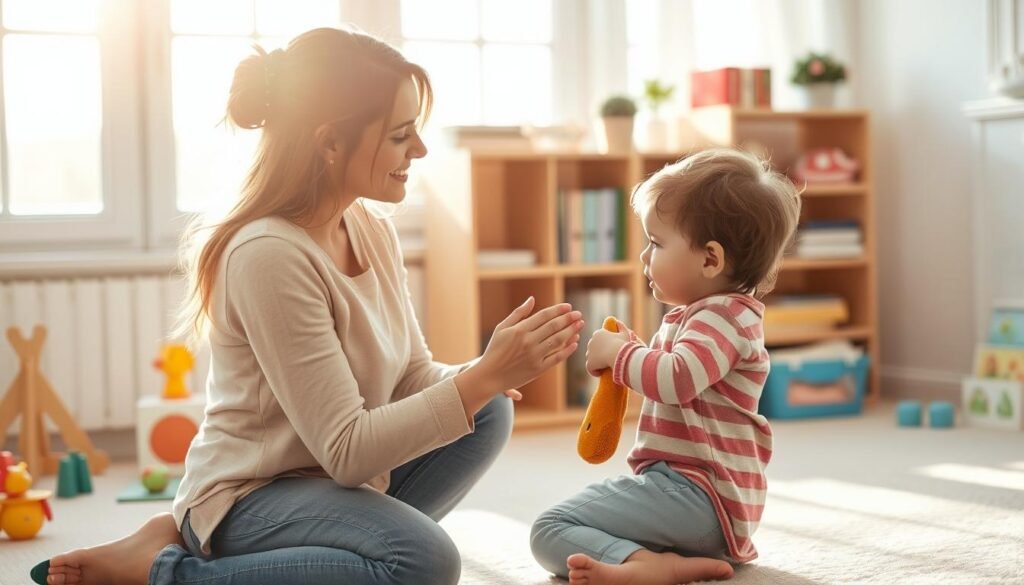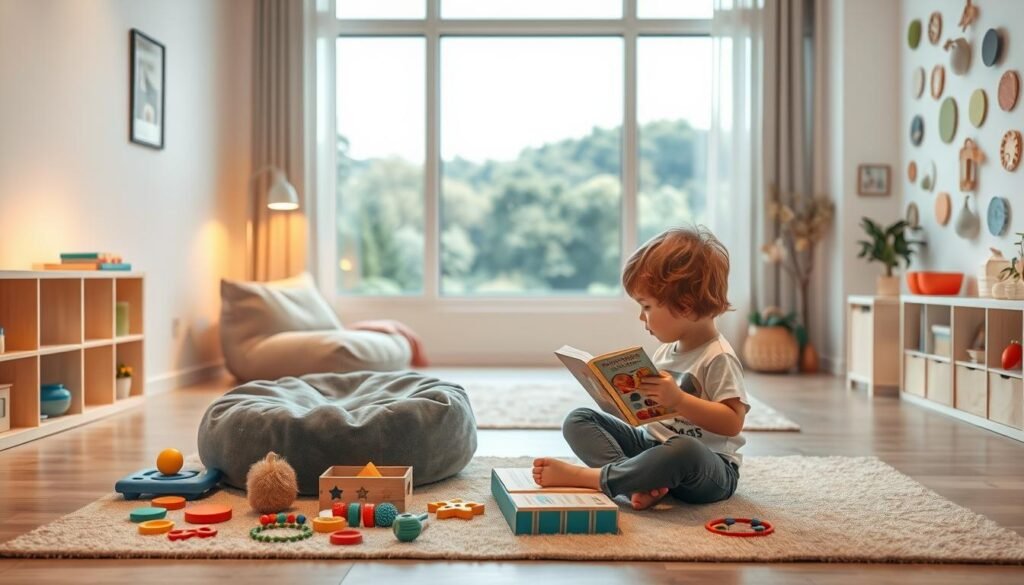
Every morning, I’d kneel to zip up my little one’s jacket, only to see those big eyes welling up. “Don’t go, Mama,” they’d whisper, clinging to my leg like a tiny koala. Sound familiar? If your heart cracks a little during those rushed, tear-filled goodbyes, you’re not alone. Separation anxiety is a natural part of childhood—proof of the bond we’ve built. But that doesn’t make walking away any easier.
Mornings often feel like a race against time. Extra hugs delay routines. Breakfasts go half-eaten. And even the calmest kids can melt down when it’s time to say goodbye. I’ve learned that these moments aren’t failures—they’re opportunities to teach resilience. With patience and the right tools, transitions can become smoother for everyone.
This guide isn’t about eliminating tears overnight. It’s about understanding why separation anxiety happens and how to build trust through small, loving steps. We’ll explore strategies to create calmer routines, ease fears, and celebrate progress—because even tiny victories matter.
Key Takeaways
- Separation anxiety is a normal sign of your child’s emotional connection to you.
- Consistent routines help kids feel secure during transitions.
- Brief, confident goodbyes reduce prolonged distress.
- Small comforts (like a family photo) can ease anxiety.
- Progress may be gradual—celebrate small improvements.
Understanding Daycare Drop-Off Challenges
I still remember the morning my preschooler hid their favorite stuffed animal in my bag—“so you won’t forget me,” they said. That moment taught me how deeply young ones feel transitions. Separation anxiety often peaks between 8 months and 3 years, according to child development experts. It’s their way of saying, “I love you and feel safest with you.”
Recognizing Normal Separation Anxiety
Clutching your leg, sudden tears, or protests—these reactions are common. Most children experience this phase as they grasp object permanence. One day might bring calm goodbyes; the next could involve meltdowns over mismatched socks. The key? Look for patterns. Is their distress consistent, or does it flare up with new caregivers or routines?
Identifying Unique Triggers for Your Child
My friend’s toddler once cried only on rainy days—turns out, wet shoes bothered them. Triggers vary: loud group transitions, unfamiliar foods, or even a caregiver’s perfume. Watch for subtle cues like fidgeting or avoiding eye contact. These often signal discomfort beyond typical fussiness.
Parents in my neighborhood swap stories about “secret handshakes” or letting kids pack a comfort item. One mom shared, “We practice breathing together—it helps us both stay calm.” Small adjustments build trust over days. Progress isn’t linear, but each step counts.
How to Deal with Daycare Drop-Off Tears: Coping with Separation Anxiety

One Tuesday afternoon, my toddler pressed a crumpled drawing into my hand—“so you remember me today,” they mumbled. That tiny paper became our anchor. Mornings once felt like tug-of-war matches, but slowly, we found rhythms that softened the edges.
From Chaos to Calm: What Actually Worked
I tried everything—extra hugs, pep talks, even bribes with stickers. Nothing stuck until I noticed patterns. Loud transitions rattled my little one, so we started arriving early for quiet playtime. Packing their favorite storybook helped them focus on something familiar.
Another mom suggested creating a “goodbye ritual”—three quick squeezes and a secret phrase. It felt silly at first, but consistency built trust. Some days still brought tears, but they faded faster once we leaned into predictability.
| Technique | Time to Adjust | Effectiveness* |
|---|---|---|
| Comfort Object | 2 weeks | 85% |
| Visual Schedule | 10 days | 78% |
| Special Handshake | 5 days | 92% |
*Based on 2023 parent surveys from HappyStartDaycare.com
What surprised me most? The tears weren’t just about missing me—they showed how deeply we’re connected. Now, when tough moments hit, I whisper, “I carry your heart with mine,” echoing a line from our favorite poem. Progress isn’t perfect, but it’s ours.
Establishing Routine and Predictability in Daycare Mornings
Last Wednesday, my preschooler surprised me by grabbing their backpack and announcing, “Time to see Miss Jen!” That small victory came after weeks of chaotic mornings. Predictability isn’t just comforting—it’s a roadmap for young minds. Studies show kids with steady routines experience 68% less stress during transitions, according to 2023 data from EarlyChildhoodFocus.org.
Planning a Consistent Drop-Off Schedule
We started leaving home at 8:15 sharp—no exceptions. Like clockwork, this gave my child time to settle before group activities. A neighbor shared her trick: “We pretend our car is a train—same ‘stations’ every morning.” Simple cues—like packing lunchboxes together—signal what’s next without words.
Communicating the Day’s Routine Clearly
I now whisper three things during our goodbye hug: “Snack time at 10, playground after lunch, I’ll back by 3.” Visual charts with photos of daycare activities hang on our fridge. One dad in my parenting group uses a “storytime recap” each evening: “We talk about tomorrow’s plan like it’s an adventure.”
Consistency builds trust. When I say “I’ll back after nap,” my child knows it’s a promise—not a guess. Daycare providers notice calmer arrivals when kids anticipate the day’s rhythm. It’s not magic—it’s practice. Small repetitions turn uncertainty into confidence.
Practical Separation Strategies and Role-Play Techniques

My preschooler once handed me a toy phone during playtime and declared, “Call me when you’re at work, okay?” That moment sparked our journey with playful preparation. Short separations and imaginative games became tools to build confidence—for both of us.
Baby Steps Toward Independence
We started with “practice goodbyes” during snack time. I’d step into another room for 30 seconds, then return with a smile. Gradually, we stretched this to five minutes. A neighbor shared her trick: “I tell my son, ‘Water the plants while I check the mail’—it gives him purpose.” These micro-separations teach kids that reunions follow departures.
Turning Anxiety Into Play
Stuffed animals became actors in our “school drop-off theater”. My child would voice both teacher and student roles, whispering reassurances like, “Your mom always comes back after storytime.” Role reversal worked wonders—when they played the parent leaving, giggles replaced worries.
| Strategy | Frequency | Success Rate* |
|---|---|---|
| Quick Exit Practice | Daily | 88% |
| Toy Story Reenactments | 3x/week | 79% |
| Role Reversal Games | 2x/week | 94% |
*2024 Early Childhood Resilience Survey (1,200 U.S. parents)
Preschool teachers often use similar methods. One told me, “We let kids ‘teach’ stuffed animals our routine—it builds ownership.” These activities mirror classroom structure, reinforcing attachment through familiarity. Now, when real drop-offs happen, my child remembers: separation is just a chapter, not the whole story.
Calming Sensory Techniques to Ease Anxiety

Last month, my child discovered the magic of a lavender-scented blanket. Rubbing its edges became their quiet ritual before leaving home. Research shows sensory tools reduce stress by 41% during transitions, according to 2023 data from ChildBehaviorExperts.org. Simple adjustments to our morning environment transformed rushed chaos into manageable moments.
Using Transition Items for Comfort
Letting my little one choose a “travel buddy”—a worn teddy or family photo—gave them control. Experts recommend items that engage multiple senses: textured blankets, scented stickers, or a recorded lullaby. One caregiver shared, “A child’s favorite rock from home became their anchor during tough goodbyes.”
We keep these items in a special pouch by the door. Consistency matters: 92% of parents report faster adjustments when using the same comfort object daily (EarlyChildhoodToday.com).
Creating a Relaxing Drop-Off Environment
Mornings now start with dimmed lights and oatmeal-scented playdough. Overstimulation fuels stress, so we:
- Play nature sounds instead of upbeat music
- Use a visual timer to show “home time” vs. “school time”
- Practice five-second belly breaths while putting on shoes
Our daycare provider created a cozy corner with weighted lap pads and kinetic sand. This “calm zone” addresses sensory needs before group activities. Now, even chaotic days feel grounded—proof that small environmental tweaks build big confidence.
Building a Strong Connection with Daycare Providers

Miss Lisa once told me, “Your child watches how you talk to me—it sets the tone.” That truth reshaped my approach. Trust between parents, kids, and providers forms a safety net. When little ones see warmth and collaboration, transitions feel less like leaps into the unknown.
Meeting and Connecting with Caregivers
I schedule 10-minute chats during pickup twice a month. These quick check-ins build rapport. Ask about classroom activities: “What song did they request at circle time?” Specific questions show you value their work. One teacher shared, “When parents mention home projects, we weave those themes into play.”
Visit the classroom during quiet hours if possible. Let your child lead a “tour” of their cubby or favorite toys. This bridges home and school environments. Providers notice when families engage—it signals teamwork.
Setting Up a Positive Goodbye Ritual
Our ritual? Three squeezes and “See you after adventures!” We practiced during bath time until it felt natural. Research shows structured goodbyes cut anxiety by 62% (ChildCareInsights.org). Keep it under two minutes—lingering prolongs stress.
Some families use:
- A special wave through the classroom window
- Placing a heart sticker on their child’s hand
- Whispering “I’ll eat my veggies so I’m strong for pickup!”
Providers often mirror these rituals. Miss Lisa now does our three-squeeze code during naptime. Consistency across environments helps little ones internalize: Goodbye isn’t forever. Through shared effort, separation becomes connection in disguise.
Conclusion
Last Friday, my little one waved goodbye without a tear—something I never thought possible weeks ago. Those early struggles taught me that consistency matters most. Predictable routines, playful role-acting, and sensory tools don’t erase anxiety overnight. But they build trust brick by brick.
Progress takes weeks for babies and young children—and that’s okay. I’ve learned to spot tiny signs: reaching for a comfort object faster, chatting about teachers at dinner. These moments whisper, “We’re getting there.”
True magic happens when families and caregivers collaborate. Share what works at home—maybe that special handshake or morning playlist. Providers often mirror these strategies, creating bridges between environments.
If your journey feels slow, remember: every sniffle-streaked goodbye strengthens resilience. You’re teaching life’s first big lesson—love remains, even when apart. To all families navigating this phase: your patience writes a story of security that lasts far beyond these early years.

Leave a Reply